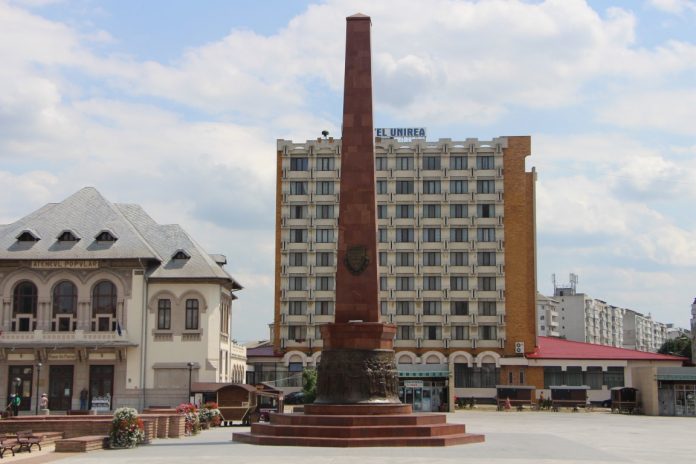Two hundred years ago, Focsani which lies at a crossroads in today’s eastern Romania, was a city of regional importance.
Strategic location
It developed into an important trade hub, due to its strategic location halfway between the Russian Empire and the Balkans.
In 1772, Russian and Ottoman diplomats held a summit near the city.
As recent as 2002, the city which is the seat of Vrancea county, had a population of just over 100,000 people.
Deprived
But then the population declined at a time when other cities began to develop after Romania joined NATO and the European Union.
Factories built during the communist era shut down. Foreign investment didn’t flow in to the relatively deprived area in southern Moldova.
Elsewhere in Romania, the trend was for people to move from the countryside to regional cities, such as Focsani, for employment and better living conditions. But the lack of development in the city meant residents slowly moved away.
They went to better paid jobs in Italy, Spain, and the UK, Adevarul reported.
Ageing population
Former journalist Silvia Vranceanu Nichita, who is a native of the city, explained the situation. “ We have an ageing population, with a lot of women (and fewer men). Men (tend to) move abroad for work”, she told universul.net on Monday.
„People have moved to the countryside where there’s cleaner air or to Timisoara and Cluj,” she said.
‘Pile’
“I talk to young people a lot, and it’s hard to get jobs in public institutes if you don’t have ‘pile’ (connections),”she explained.
“There are positions, but they get filled…… We need access to equal opportunities in Focsani,” she added.
“The economy is underdeveloped. People don’t want to earn the minimum salary (offered in Focsani), so they move to Cluj, Brasov and Bucharest.”
In just one decade, from 2002 to 2012, the city’s population shrunk by more than 20%. By 2012, there were about 78,000 inhabitants, a drop of more than 20,000 inhabitants.
Migration
Overall, Vrancea county which has vineyards, meat processing plants and textile industry lost 47,000 people in the same period. Since then, the city has been losing an estimated 2,000 people a year either through migration or demographic changes. The next census is in 2022.
According to the Electoral Bureau said there were 77,000 eligible voters in 2020. However that figure may not reflect reality as some residents who moved abroad kept their old addresses despite no longer living there.
“Many emigrated to Western Europe, although some returned during the pandemic. It’s a complicated time,” Ms Vranceanu said.
After a 20-year career in journalism, she founded the ‘Me, You and Them’ non-governmental association. Its mission is to give opportunities to disadvantaged youngsters in Vrancea.
Thriving
Focsani was a thriving city in the interwar period. In the 1930 census when Moldova stretched to areas in today’s Ukraine and the Republic of Moldova, it was the fifth biggest city after major cities of Iasi, Chernivtsi, Chisinau and Galati.
But the gradual but constant decline means its population now lags behind other other northern Romanian cities which are county seats such as Bacău, Botoşani, Suceava and Piatra Neamţ.
One Romanian city tests ‘plastic bottles for bus tickets’ to promote recycling, reduce car pollution




















